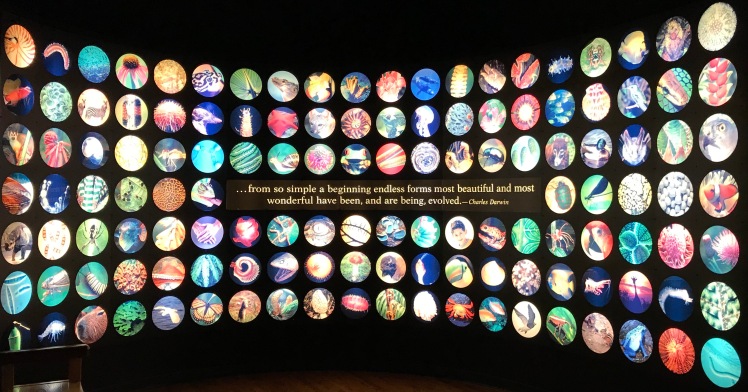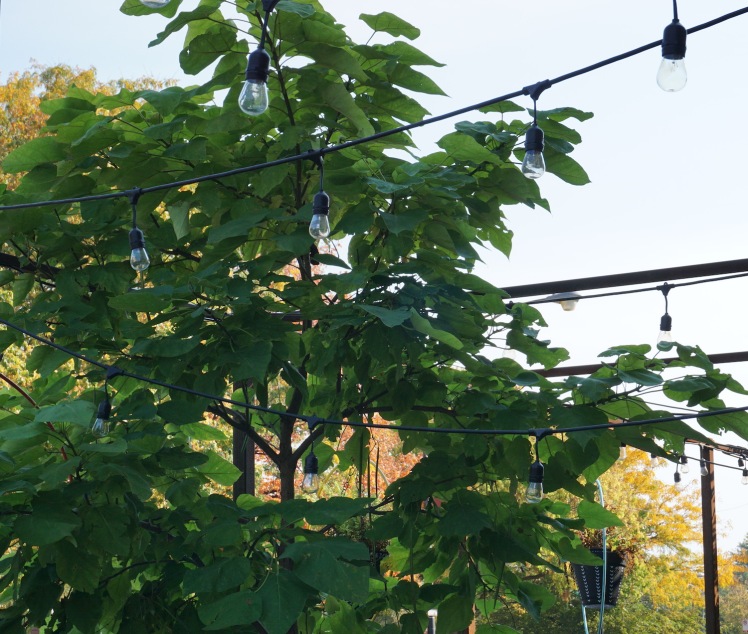Study those two seedlings in the headline closely.
What’s the difference?
Outwardly, they appear identical. In fact, they are. I copied and pasted the second one from the first one. I hit Control+⌘+Space to bring up the emoji keyboard and find the seedling. The 2nd one was just ⌘+C and ⌘+V. They’re digital 0’s and 1’s forming the image of a seedling establishing itself to grow into a mature plant generated slightly differently. Because of a recent decision, those identical seedlings will be treated very differently by the European Union (EU),
The EU recently ruled that CRISPR gene-edited plants fall under the same regulatory considerations of the first incarnation of modern genetically modified organisms (GMOs): transgenesis. Transgenesis takes a DNA from one source and puts it in another. In plants, scientists use a natural soil bacterium that causes crown gall disease, Agrobacterium tumefaciens, to get DNA is inserted from source to a target plant.
There are no panaceas, but there is towards better. Most plant scientists want to build a better, greener world. The problems are complex and biotechnology can help solve them, it just has to be given that chance to do so. ☘️
By replacing the normal DNA A. tumefaciens inserts into plants to cause disease with a desirable trait scientists want to confer (two examples are roundup resistance and Bt pest resistance), a Genetically modified plant is made. The insertion process is generally random, however. Meaning that scientists creating a product have to screen through a lot of transgenic “events” (successful insertions of DNA from bacteria into plant) to find ones best suited for application in the field.

CRISPR is the newest tool scientists have, also derived from bacteria (it’s role in nature is as a bacterial defense system against infectious viruses), to modify DNA in organisms. The work engine of CRISPR is usually a protein called Cas9. There are other bacteria that have proteins that can do similar things to what Cas9 does that scientists are developing as DNA modifying tools as well. Cas9, with some guidance from a molecule related to DNA called RNA can find a specific sequence of DNA and cut it.
CRISPR-Cas9 can insert a transgene as A. tumefaciens can at a precise site in the genome. It can also chop out sequences, or make specific changes to DNA (i.e. change a single letter of the A-T-C-G alphabet that makes up DNA and genomes). It is the most precise tool scientists have to intentionally change an organisms DNA.
Importantly, it can achieve the exact same results as traditional breeding or random mutagenesis (that is, treating seeds with a chemical that changes DNA), two widely methods widely accepted of modifying plants to get novel traits.
The Bt Brinjal is a modern twist on an ancient domesticated classic modified by breeding for generation after generation☘️
In the EU now, a plant generated by CRISPR, with no sign of DNA from another organism, will be treated as a GMO even if an identical plant produced by random mutagenesis exists, conferring the same trait. CRISPR is, generally, much faster than traditional breeding. The process now matters more than the results of it to the EU.
Bt Brinjal (eggplant)
In 2014, 20 farmers in Bangladesh were given a transgenic brinjal developed in a public-private partnership. In 2018, 27,012 farmers were planting the Bt Brinjal (17% of all farmers there). Farmers trained in its cultivation has allowed them to save money on pesticides, allowed them to sell better quality eggplant with a higher yield, and generally seems to have improved their quality of lives. This is a pretty clear win for farmers, the environment, and food security, based on a decades old technology (Bt) used by farmers as a spray moved directly into a plant.
The Bt Brinjal is a modern twist on an ancient domesticated classic modified by breeding for generation after generation. Eggplant is a native plant to South Asia, an important domesticated plant going back to antiquity. It is a plant in the nightshade family, Solanum melongena. It is an important vegetable (technically brinjal is a fruit) crop in Bangladesh. Potatoes (Solanum tuberosum) are not native to the region, they’re from the Andes Mountains in western South America. They were an import from the colonial age, when plants spread around the world to non-native ranges and became culturally more associated – at least in European cultures – with their new regions than their place of origin – e.g. tomatoes with Italy, potatoes with Ireland. The potato is also an important vegetable crop grown in Bangladesh.
Arguably, growing potatoes in Bangladesh, a whole new genome’s worth of traits is a bit odder and less natural than a single gene moved into an eggplant from a naturally occurring soil bacterium, Bacillus thuringiensis (Bt) that has been used in a spray form as pest control for decades.
Monsanto Ruling
On Aug 10, a jury in California ruled against Monsanto in a case involving a man who said glyphosate was the causal agent of his cancer. That is a hard link to make with the state of current scientific evidence. As Andew Kniss points out, those working in the agriculture sector who are most exposed to glyphosate haven’t seen an uptick in their rates of cancer and the research that has been done doesn’t suggest glyphosate as a causal agent.
This ruling and those celebrating it may have little to do with the actual technology or chemistry or even that someone has cancer. In many ways we live in a new gilded age where the rich and powerful are not seemingly held accountable in any meaningful way. Even if the scientific evidence is not there, getting a lot of money out of a major corporation is almost always seen as good. In this narrative, Exxon Mobil and Monsanto are equivalent. Only, this is more complicated (as most stories are), as the latter actually takes climate change as a major threat to deal with. As a seed company, Monsanto has to produce seeds that will yield for farmers that buy them in a climate changed world.
Glyphosate is an herbicide that works at low doses and is safer than previous generation chemicals. It is part of a climate change mitigating strategy as it saves fuel because it doesn’t require as many applications as other herbicides.
In the case of roundup ready sugar beets, many sugar buyers do not want glyphosate sprayed plants as the source of sugar (note: sugar is sugar once processed, regardless of source). Due to this, some growers are willing to go back to the old methods, rather than one or two sprays of glyphosate as reported by Dan Charles of NPR:
“He says that planting non-GMO beets would mean going back to what they used to do, spraying their crop every 10 days or so with a “witches brew” of five or six different weedkillers.”
Going back to a “witches brew” seems less than ideal if this was really about fear of a chemical. Now we’re going back to six sprayed in higher concentrations and more often. More work. More sprays. More fuel used.

We are a part of Nature
The EU ruling on CRISPR has, perhaps ironically, guaranteed that agricultural giants are the only ones that could afford to bring a new plant variety to market.
We humans are now nature’s largest organism capable of transferring genes, genomes, and whole organisms around the world on a large scale☘️
Many plant scientists are now in the unenviable position of using CRISPR in the lab to create potentially desirable new varieties and in parallel, needing to produce an identical plant via natural, more acceptable, means (e.g. random mutagenesis and crossing to clean up the unintentional mutations caused). The result is the same, but the latter is now the only acceptable way of creating a new plant variety in the EU that is available to a smaller company or an academic lab working on applying their plant improvement work to help the world’s farmers and continue to feed the world.
Nature has been a master of shuffling DNA around, changing it in all sorts of diverse ways. Mutations can have a number of natural causes, like the sun (UV light), age, and even in the normal course of cell division, DNA replication mistakes can be made. There is even a background random mutation rate we can detect.

Viruses and bacteria are the most ancient natural masters of shuffling segments of DNA around and mutating, including entire genes. Even entire genomes can be transferred as in the case of mitochondria that complex cells rely on to produce energy. There are even wilder and more bizarre things that have happened in the history of DNA transfer from bacteria or virus to animals and plants. Go read Ed Yong’s excellent book I Contain Multitudes for a lot of bizarre examples, all natural.
Modern humans evolved around 200,000 years ago. In that time, we have spread and modified plants and animals for our needs, getting more sophisticated in our methods over time. We humans are now nature’s largest organism capable of transferring genes, genomes, and whole organisms around the world on a large scale. That comes with some responsibility for ourselves and the world we live on, but that doesn’t mean doing nothing to help improve lives through technology. There are no panaceas, but there is towards better. Most plant scientists want to build a better, greener world. The problems are complex and biotechnology can help solve them, it just has to be given opportunity to do so.